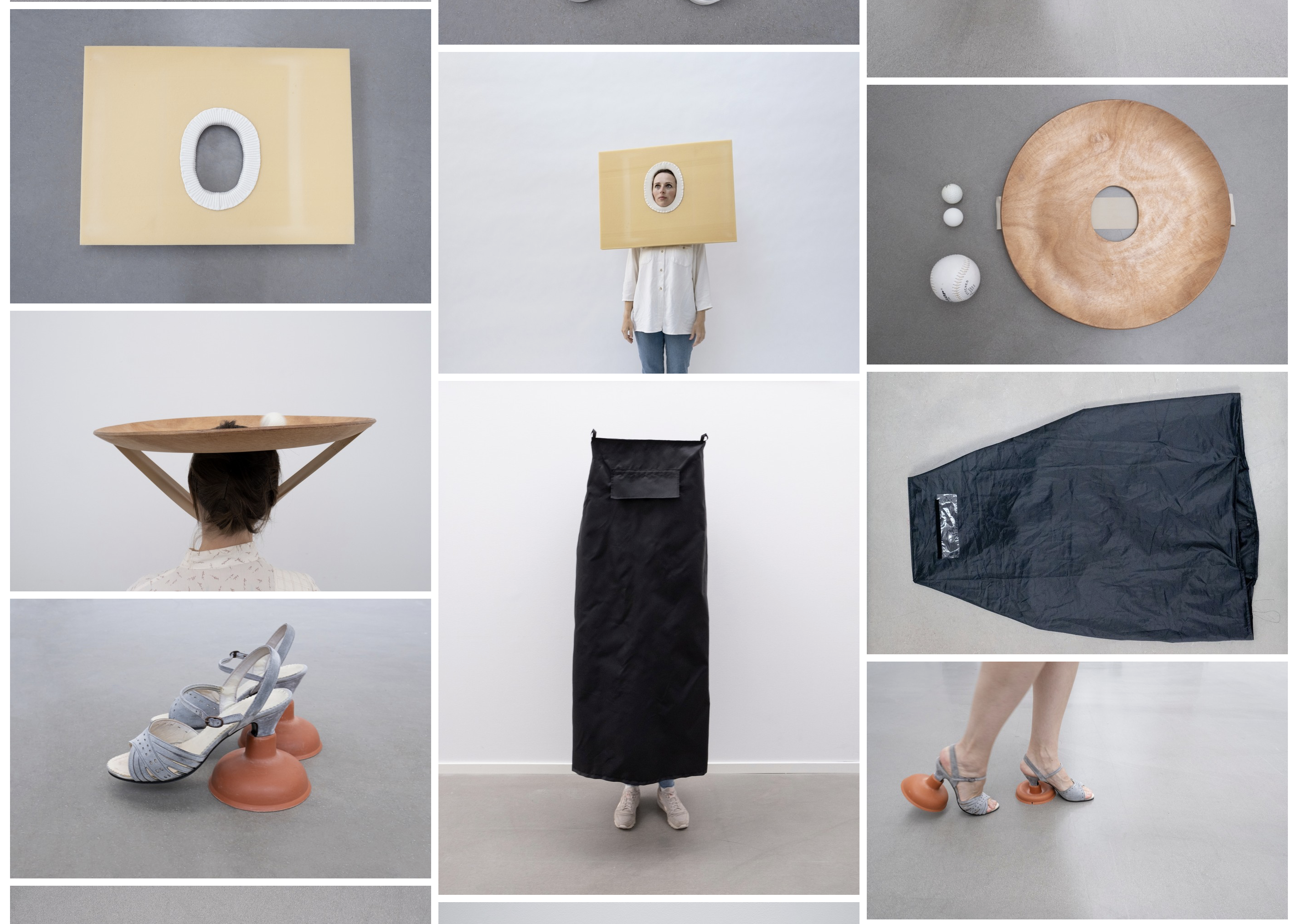Wearing Sound: Foundations of Sonic Design is the title of Vidmina Stasiulyte PhD dissertation, which she successfully defended on Friday December 11, 2020 at the University of Borås. Danielle Bruggeman was opponent and discussion leader during the PhD defense.
This research revises fashion by approaching it from a different—sonic—perspective wherein sound is considered not as a negative aspect but as a potential source of a new theory and facilitator of the evolution of new methods. Sound is thus presented not as a secondary quality of designed objects, but as the main idea-generator. The research opens new avenues for design thinking with ears rather than eyes. This thesis explores clothing and fashion from the perspective of listening rather than seeing, sounding rather than showing, and is a form of rethinking and redefining fashion by starting with the statement that dress is sound. An investigation into sonic expressions is seen as a disruptive fashion practice, and could be described as a process of ‘unlearning’—encouraging one to leave behind pre-existing knowledge of fashion expressions by focusing on something else when defining and designing processes. That something else is sonic expressions. In doing so, it rethinks the dressed body as a matter of sound gestalt.
During her defense she argued how sound is seen as an undesired product feature in a system so focused on the visual and sight. For example, the fact that we wear clothes directly on the body and placing the seams and labels on the inside which makes it more uncomfortable for us to wear, while the feeling of cloth impacts how we feel in our garments. This indicates how the visual of a garment is leading, and how the fashion system is focused on what clothes look like rather than how they feel. When we take Stasiulyte’s perspective, the care label does not only make us feel uncomfortable but is also a disturbing sound to hear.
Within her research she asked the question: ‘who am I if I do not see myself?’ This is also the title of her exhibition, where she invites people to try on different objects and explore the sounds to experience fashion in a different way. For this question she conducted discussions with blind people to dive into the sonic expressions. This approach is something I found very interesting as the fashion system is a very excluding system, not only for human beings but also for material or living matters. Her approach moves into the direction of social sustainability because she argues how we can think in a more emphatic way towards the visual impaired and other diverse communities. Her perspective and design approach may lead to a more inclusive approach.
For her research she made an extensive Sonic Fashion Library [1], and while listening to it some sounds were more familiar than others. Of course, the clicking of heels, quite a loud noise, is something we all recognize, while others were softer and gentler like the wearing of a jacket directly on the body. She argues for the importance between an acting body and a reacting material for the potential of a sonic expression. This shows how important the body and materials and the interaction between them are in fashion because without one another the sound cannot be there. Besides the Sonic Fashion Library, she also created Sound to Wear. This is an analog cabinet of sonic curiosities that consist of 33 sound tools for listening and sounding practices. [2] Here as well the clicking of heels can be heard, but quite a different sound than in the Sonic Fashion Library. These heels have a ‘plopping’ sound rather than a ‘clicking’ one. This is interesting as it plays with our perceptions.
Within her Sonic Fashion Library and Sound to Wear, she also reverses the roles of the sound versus the visual. For example, in the Sonic Fashion Library, you can scroll through the different recordings she made. The first click is to listen to the sound, and with a second click you can see what specifically makes the sound. This is a refreshing and interesting approach as it completely the opposite of what is of focus now: the visual.
With Wearing Sound: The Foundations of Sonic Design, she shows the importance of understanding fashion as a platform for new knowledge production and critical thinking by unlearning. We need to let go of the preconceptions. Let’s listen to the Sonic Fashion Library and Sound to Wear to colletively explore what fashion could be from a sonic perspective.
Vidmina's PhD thesis can be downloaded here.
[1] https://sonicfashion.se/
[2] https://www.vidmina.net/sound-tools
